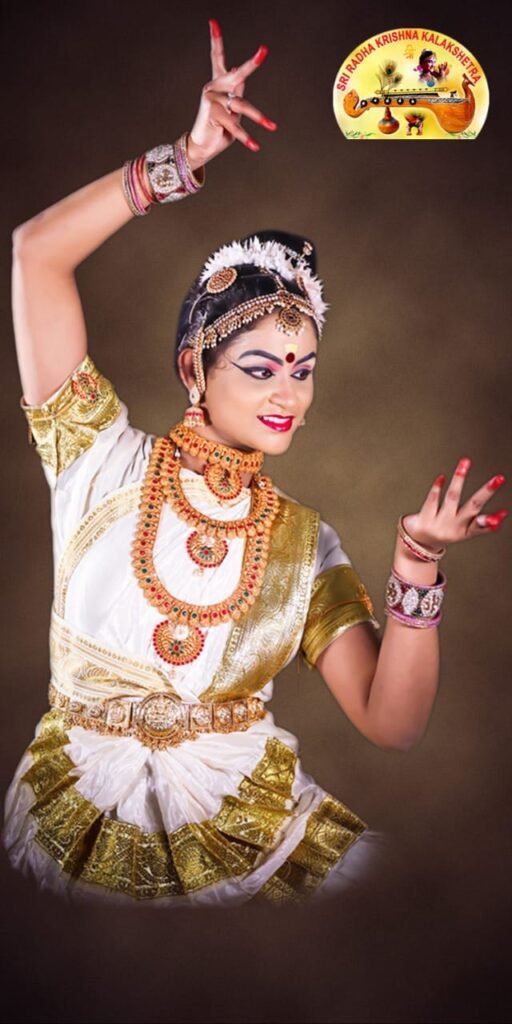The Enchantress of Kerala’s Dance Legacy
Mohiniyattam, the classical dance of Kerala, unfolds like a soft breeze across a lotus pond—gentle, lyrical, and deeply meditative. Named after ‘Mohini’, the divine enchantress avatar of Lord Vishnu, Mohiniyattam is a feminine and graceful dance form that captivates with its fluid movements, emotive expressions, and soulful storytelling.
Myth and History Intertwined
The roots of Mohiniyattam trace back to ancient temple rituals in Kerala, where it was performed by women as a devotional offering. Over time, it was influenced by the rich cultural fabric of Kerala, including the rhythmic elegance of Kaikottikali and the expressiveness of Bharatanatyam. Though it experienced a decline during colonial rule, the revival efforts of poet Vallathol Narayana Menon and the establishment of Kerala Kalamandalam in the 20th century restored its stature as one of India’s major classical dance traditions.

A Dance of Subtle Elegance
Mohiniyattam is characterized by its lasya (graceful, feminine) quality, with movements that are soft, swaying, and circular. The dance typically follows a solo format, highlighting abhinaya (facial expression and emotion) more than vigorous footwork. Performances begin with Cholkettu (invocatory piece), followed by Jatiswaram (pure dance), Varnam (expressive and technical climax), Padams, and Tillana, culminating in Shlokam or Saptham. Themes often revolve around devotion, love, and nature, celebrating the inner world of feminine emotion and spiritual longing.
Costume, Music, and Expression
The traditional Mohiniyattam attire includes a white or ivory sari with golden borders (kasavu), reflecting Kerala’s cultural identity. The dancer’s hair is typically tied in a bun adorned with jasmine flowers, and the jewelry is elegant yet understated. Makeup is designed to accentuate the eyes, which are central to emotive storytelling. The music follows the Sopana style native to Kerala temples, characterized by its slow tempo and melodic richness, and is often performed with instruments like the mridangam, edakka, veena, and flute.
Tradition Embraced, Horizons Expanded
While Mohiniyattam remains rooted in its devotional and feminine aesthetic, contemporary practitioners are exploring a broader canvas—using the dance to tell stories of resilience, societal change, and the human spirit. Yet, even as themes evolve, the core ethos of serenity, grace, and introspection remains unchanged.
At Sri Radha Krishna Kalakshetra, we cherish Mohiniyattam as an art form that nurtures inner poise and outward grace. Our training methodology balances tradition with creativity, guiding students through the dance’s philosophical depth and artistic subtlety. Under the mentorship of accomplished gurus, learners explore not only technique and performance but also the cultural and spiritual narratives that make Mohiniyattam truly enchanting.
Come, discover Mohiniyattam with us—where each step is a whisper, each gesture a hymn, and each performance a celebration of divine beauty and feminine strength.

Sri Radhakrishna Kalakshetra, established in 1998, is a premier institute dedicated to preserving and promoting Indian classical dance and music through disciplined training, cultural programs, and global performances.
All Rights Reserved © 2025 | Sri Radhakrishna Kalakshetra